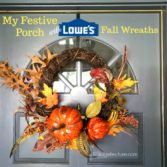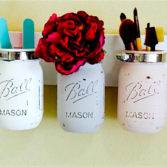Entry #2723, August 7, 2013
Are you wanting fall colors in your outdoor home? If so, now is the perfect time to start thinking of your fall garden. August is the right month to tackle your yard, turning it into a wonderful space to play, unwind, and entertain. If you can take care of your garden now, you will have a yard with full of color and texture.
Image via: Matthew Cunningham Landscape Design LLC
To plan for your garden, you just have to know about a few things like the size of your garden, the amount of moisture and sun your space gets, and one or two other simple garden conditions.
When to Plant
The sowing of late season plants depends on the time that the plants take to reach a reasonable blooming or harvest size. You have to take notes of the first frost date in your region and the days to bloom/harvest imprinted on the back of each seed packet. Try to sow the seeds at a time that you can have the bloom or harvest before the frost comes.
Image via: Jeffrey Gordon Smith Landscape Architecture
Prepare the Lawn
As winter will show up after the autumn, your late summer gardening plan should include ideas for the cooler days and nights ahead. If you already have an established lawn, use higher dose of nitrogen fertilizer but keep the nitrogen level low if you want to set up a new lawn by sowing seeds. This time is excellent for establishing perennial ryegrass, bluegrass, and fescue.
Tips for Having a Good Bloom
If you like to set up a flower garden, you must want to have a good bloom of your planted flowers. Sometimes, flowers like hyacinths and tulips come up short because they need more chill time. For a beautiful and full-grown display after planting, refrigerate flower bulbs. Buy bulbs now and keep them in your refrigerator’s vegetables bin for minimum six to eight weeks. Plant them afterwards and you will see multitude of blooms in your garden.
Image via: Eslem Garden
Plan for Vegetables
Fresh peas, spinach, and lettuce are not just spring vegetables. You can plant a round of these favorites when temperatures become cool in late summer. The vegetables that you can try during fall are tomato, spinach, snow pea, cabbage, carrot, parsley, lettuce, bell pepper, green bean, broccoli, dill, cilantro, and other favorite items. Like summer, there is no or little possibility of rain during autumn. So, choose vegetables that grow well even without having plenty of water.
Consider Non-Flowering Plants
Many plants are there that bloom either in the late summer or in the fall. However, non-flowering plants can be too a great addition to your late summer garden. Some ornamental grasses are there that will definitely be an excellent choice for your fall garden. In fact, non-flowering plants will show you that you can enjoy lots of beautiful colors with plants that do not have flowers.
Image via: The Big Plant Nursery
If you look closely, you will notice that the looks of your garden change from season to season. It may look great in one season but becomes dull in another. Only proper planning and its execution can help you maintaining the looks of your garden throughout the year.
For more gardening ideas on Stagetecture, click here.
Receive Stagetecture's Daily Lifestyle Ideas
FREE - Daily emails with recipes, home decor, D.I.Y, and lifestyle tips! : ) Who doesn't need help?










Leave a Reply